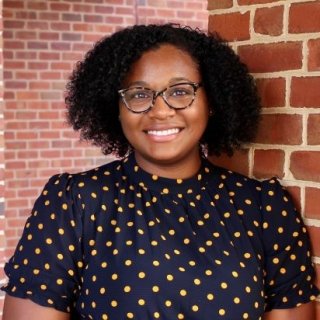This post is the 5th publication in a YPAR series, which aims to explain participatory research, youth-led measurement and evaluation approaches, and strategies for youth-adult collaborations in YPAR.
By: Jessica Forrester
Highlights
- In this series on Youth Participatory Action Research (or YPAR), we’ve argued that youth engagement at all levels of research design can leverage their expertise and increase the validity of research findings.
- There are several ways to increase youth voice in research, including listening, collaboration, and leadership.
- In this blog, I will describe how I’ve listened to youth in my collaborative research and how I envision youth leadership could amplify my future work.

Increasing student voice and engagement in the research process has many benefits for youth development. These benefits include creating a network of justice-oriented adults and youth, developing critical thinking skills, and cultivating a sense of empowerment and purpose. Listening, collaboration, and leadership are three approaches to increasing youth voice in research that align with expert suggestions for transforming school decision-making. I will describe how I’ve used these practices below and give strategies on how you can apply these ideas to your work.
Increasing Student Voice Through Listening
Not all research studies are designed to be youth-led, and that’s okay. Sometimes adult researchers can include instances of listening to seek youth perspectives and opinions about our data and work.
Within my doctoral research process, I was the leading developer of culturally responsive mathematics activities for an after-school tutoring program in the North Minneapolis community. Even though I was the primary designer, I felt there were ways to include youth voices and feedback to improve my research. For example, one activity idea included an infographic of the distribution of Black teachers in the United States by region. It was clear from the infographic that the Midwest had drastically fewer Black teachers compared to the South, West, and Northeast. I was hesitant to include this figure because the students attending the program were predominately Black, and my aim of the activities was to create joyful learning experiences for students. Questions I asked myself were:
- How can students help transform this activity from bleak to joy-centered?
- How can we work together to change this activity into one focused on students’ identity and community?
- How can we highlight Black teachers in Minnesota to inspire students and future teachers?
I held a reflection meeting with two 11th grade students participating in the program to gather youth input and feedback. I showed them the infographic, expressed my hesitancy to include it, and asked how they thought we could make this infographic more joyful. They gave several insightful possibilities:
- Using the chart as an introduction to the lack of Black teachers locally and nationally,
- Creating a survey for Black teachers to know more about their experiences, and
- Designing a call to action for more teachers of color.
The revised activity would still allow students to mathematically explore the data while critiquing Black teachers’ working conditions and suggesting recommendations for change. We left that conversation feeling hopeful that a somewhat depressing activity could transform into a multi-dimensional learning moment for students.
Moving from Listening to Leadership
Listening is an excellent start to increasing youth engagement but it comes with challenges. For instance, Dana Mitra mentions the possibility of misinterpreting youth voices when students aren’t fully engaged with all steps of the research process. A way to improve youth engagement and move past a limited practice of only listening is to create opportunities for leadership and decision-making. A future direction of my research would incorporate students in the development phase of curriculum writing. At the end of the day, students are the ones engaging with curricular materials and deserve opportunities to give their voice and input. A fully collaborative curriculum with researchers, educators, community members, and students would provide opportunities for youth leadership over their learning.
If you are interested in moving from listening to leadership in your work, here are some tips and questions to ask yourself:
- Acknowledge your bias on what partnerships between youth and adults look like. What are my preconceptions of youth-adult collaboration? How can I change my everyday practices to create reciprocal youth-adult relationships? Am I willing to learn from the insider knowledge of youth?
- Establish clear goals, roles, and responsibilities at the beginning of the collaboration. Do I know everyone’s competencies, strengths, and talents? Are those strengths aligned with their roles and responsibilities? Am I providing valuable training opportunities to support youth development?
- Regularly reflect on your practice. Is there any misalignment between the partnership’s goals and actions? Is anything holding me back from transforming my current youth-adult collaboration? Over the next few months, what can I do to improve our decision-making process, communication, or shared responsibility?
Missed a post in the YPAR series? Check out all the tips and resources:
- The Benefits of Engaging in Participatory Approaches to Research
- Why Young Investigators Are Important
- Youth Voices in YPAR (includes youth)
- Strategies for the YPAR Collaboration Process (includes downloadable resources)
- How Can Youth Voice Amplify Research? Listening & Leadership Are Key
- 4 Universal Facilitation Tips for YPAR Collaboration
- Asset & Power Mapping as Tools for Youth-Led Research (includes downloadable resources)
- Why YPAR Matters: Youth Are “Looking at the World Differently” (includes youth)
If you have any comments or questions about this post, please email Youth-Nex@virginia.edu. Please visit the Youth-Nex Homepage for up to date information about the work happening at the center.

Author Bio: Dr. Jessica Forrester is a postdoctoral researcher working directly with Youth-Nex and the Youth Action Lab. Before joining the University of Virginia, Jessica earned a Ph.D. in STEM Education from the University of Minnesota and a bachelor’s and master’s degree in biomedical engineering. Her dissertation combined her interest in STEM engagement with justice-oriented practices in education to create mathematics activities for an after-school tutoring program in North Minneapolis. Specifically, qualitative and community-based approaches were utilized to acknowledge community assets and, in turn, value those assets during mathematical learning to influence students’ identity development, skills development, criticality, and joy. Additionally, Jessica explores equity and justice through youth participatory action research and mentoring networks.
